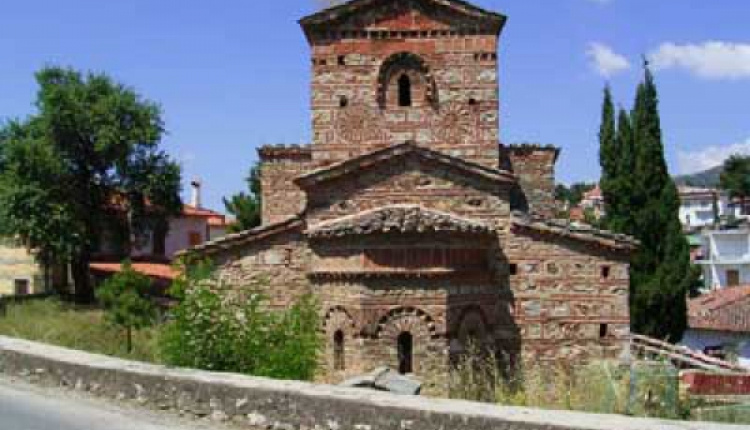Byzantine Kastoria In Greece
- by XpatAthens
- Tuesday, 26 May 2015

The Byzantine emperors, it is said, regularly exiled dissident members of their court to Kastoria. Like Ochrid to the north, half-way across the breadth of the Balkans on an artery reaching from Constantinople to the Adriatic Sea, evidently exile in this little Greek lakeside resort was meant to be a chastening punishment.
Today, such punishment is a rare pleasure. Kastoria boasts a Byzantine heritage that seems second to Constantinople. But, unlike Istanbul, this little town in summertime enjoys a captivating serenity. In wintertime, I should add, it is entirely different, so they say. For this is the fur capital of Greece, a status it owes to its ancient heritage of trapping beaver (beaver in Greek being kastori, with the plural being kastoria) in Lake Orestiadha. An inexplicable number of shops fit out Greece’s best-dressed women in bulky coats as well as tight leather, risking political incorrectness in most other European countries.
Lake Orestiadha is graced by pelicans. These bewitchingly beautiful birds circle around the lakeside like jumbo jets before effortlessly descending, twisting then gliding to plop onto the water close to shore alongside the ungainly but distinctive watercraft here. The restless pelicans catch your eye as you enter the town, which has colonised the isthmus of a steep and bulbous promontory reaching out into the northern part of the lake. Refurbished Roman fortifications belonging to ancient Celetrum were probably first renovated in the 6th century AD when this had become Justinianopolis. These were strengthened again with 13th century bastions by the Epirot Despots. The unevenly restored walls extend across the narrow neck, in front of which is the daily market of local farmers, men and women from the slopes of the Grammos mountains, wizened by long summers. Rising steeply behind the walls is the modern town with its roots in Byzantium and the Ottoman age. Along the west-facing shoreline is a string of bright cafés; this is the heart of the present city. By contrast, the east-facing shoreline, tracked by a promenade, is shaded by planes and has an elegiac air. Here the discrete sense of serenity is profound as the trees drift past the excellent Kastoria Hotel into the thicker woodland that shrouds the narrow sylvan track that winds around the promontory a distance of some six miles.
To read more, please visit World Archaeology Today, such punishment is a rare pleasure. Kastoria boasts a Byzantine heritage that seems second to Constantinople. But, unlike Istanbul, this little town in summertime enjoys a captivating serenity. In wintertime, I should add, it is entirely different, so they say. For this is the fur capital of Greece, a status it owes to its ancient heritage of trapping beaver (beaver in Greek being kastori, with the plural being kastoria) in Lake Orestiadha. An inexplicable number of shops fit out Greece’s best-dressed women in bulky coats as well as tight leather, risking political incorrectness in most other European countries.
Lake Orestiadha is graced by pelicans. These bewitchingly beautiful birds circle around the lakeside like jumbo jets before effortlessly descending, twisting then gliding to plop onto the water close to shore alongside the ungainly but distinctive watercraft here. The restless pelicans catch your eye as you enter the town, which has colonised the isthmus of a steep and bulbous promontory reaching out into the northern part of the lake. Refurbished Roman fortifications belonging to ancient Celetrum were probably first renovated in the 6th century AD when this had become Justinianopolis. These were strengthened again with 13th century bastions by the Epirot Despots. The unevenly restored walls extend across the narrow neck, in front of which is the daily market of local farmers, men and women from the slopes of the Grammos mountains, wizened by long summers. Rising steeply behind the walls is the modern town with its roots in Byzantium and the Ottoman age. Along the west-facing shoreline is a string of bright cafés; this is the heart of the present city. By contrast, the east-facing shoreline, tracked by a promenade, is shaded by planes and has an elegiac air. Here the discrete sense of serenity is profound as the trees drift past the excellent Kastoria Hotel into the thicker woodland that shrouds the narrow sylvan track that winds around the promontory a distance of some six miles.

